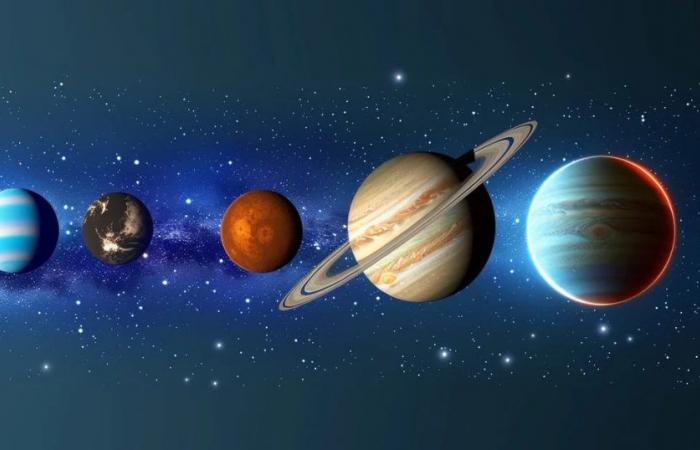He Solar system is a vast and fascinating array of celestial bodies ranging from the fiery Sun to the cold, dark confines of the dwarf planets and their moons. Every corner of the planetary system is filled with mysteries and phenomena that capture the imagination of scientists and curious people alike. From giant planets to tiny moons, each of these bodies offers unique and surprising characteristics.
This constant search for knowledge has led to the discovery of peculiarities that, at first glance, may seem unusual, but that have profound impacts on issues such as spaceships, the sizes of the planets and different magnitudes of the bodies. These curiosities remind us that, although much progress has been made in the exploration of space, there is always something new and unexpected to learn about the cosmic environment where we live.
The probes Voyager 1 and Voyager 2launched in 1977 by NASA, are the best known for having left the Solar System. Both vehicles have provided historical images and data of the outer planets. Voyager 1 crossed the heliopause in 2012entering interstellar space, and currently continues to send information to Earth from beyond the solar influence.
Pioneer 10released in 1972, was the first spacecraft to pass through the asteroid belt and make a flyby of Jupiter. After completing its primary mission, the spacecraft continued its journey out of the Solar System. In 2003, NASA lost contact with Pioneer 10, but It is estimated that it continues its journey in the direction of the star Aldebarán.
Pioneer 11launched in 1973, followed a similar trajectory to Pioneer 10, performing flybys of Jupiter and Saturn. It was the first spacecraft to send detailed images of the rings of Saturn and its moon, Titan. Pioneer 11’s mission ended in 1995 when NASA lost contact with the probe, although it is believed to still be traveling through interstellar space.
Ganymedethe largest moon of Jupiter and the solar system, It greatly exceeds the size of Mercury. With a diameter of approximately 5,268 kilometers, Ganymede is not only larger than Mercury, which has a diameter of 4,880 kilometers, but It is also larger than the dwarf planet Pluto. In addition, Ganymede has its own magnetic field and a thin oxygen atmosphere.
TitanSaturn’s largest moon, is the second largest moon in the solar system and also surpasses Mercury in size. With a diameter of about 5,150 kilometers, Titan is notable for its dense atmosphere, composed mainly of nitrogen with traces of methane. This thick atmosphere and large size have made Titan an object of particular interest for planetary science and the search for life beyond Earth.
Callistoanother of Jupiter’s moons, is the third largest in the solar system and It also exceeds Mercury. With a diameter of about 4,821 kilometers, Callisto is only slightly larger than Mercury, but Its cratered surface distinguishes it as one of the oldest and most geologically inactive bodies in the solar system. The possibility of a subterranean ocean beneath its icy surface has been a subject of speculation and scientific interest.
Iothe innermost of Jupiter’s large moons, is also larger than Mercury. With a diameter of approximately 3,643 kilometers, Io is known for its extreme volcanic activity, the largest of any object in the solar system, a result of the tidal forces generated by Jupiter and the other Galilean moons. This intense geological activity makes Io a unique and fascinating place for the study of planetary processes.
The Earth, with a average density of approximately 5.52 grams per cubic centimeter, is the densest planet in the Solar System. This high density is due to the composition and structure of the planet, which includes a metallic core composed mainly of iron and nickel, surrounded by a mantle and a crust of silicates. The Earth’s density is a crucial factor influencing its gravity and its ability to retain an atmosphere suitable for life.
In addition to its core, The structure of the Earth’s mantle, which is composed primarily of rocks rich in magnesium and iron, also contributes to the planet’s overall density. The combination of a dense metallic core and a relatively dense rocky mantle makes Earth have a higher density than other planets in the Solar System, such as Jupiter, the largest planet, but with a much lower average density due to its predominantly gaseous composition.






